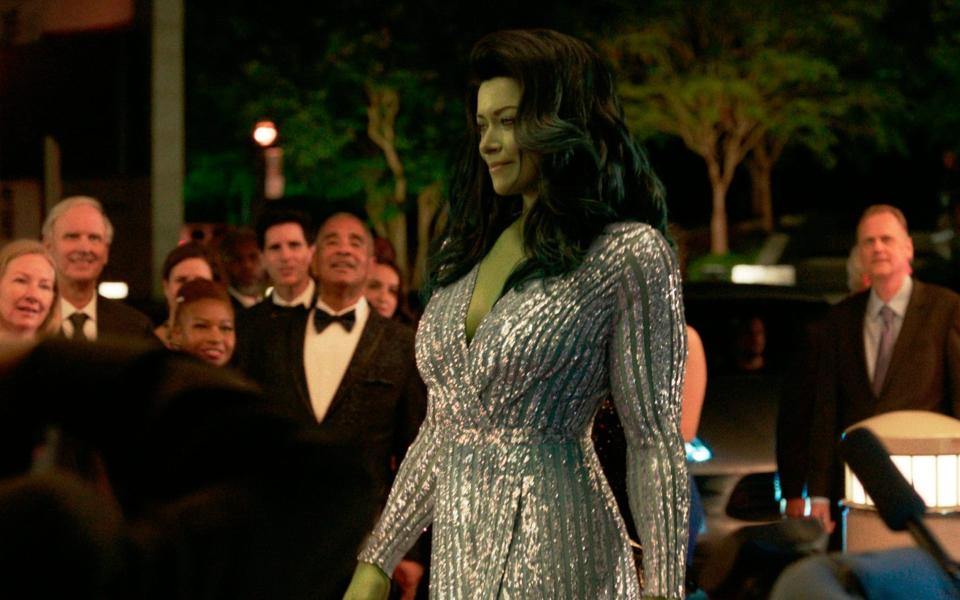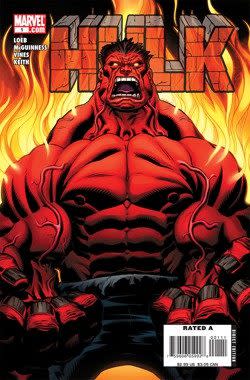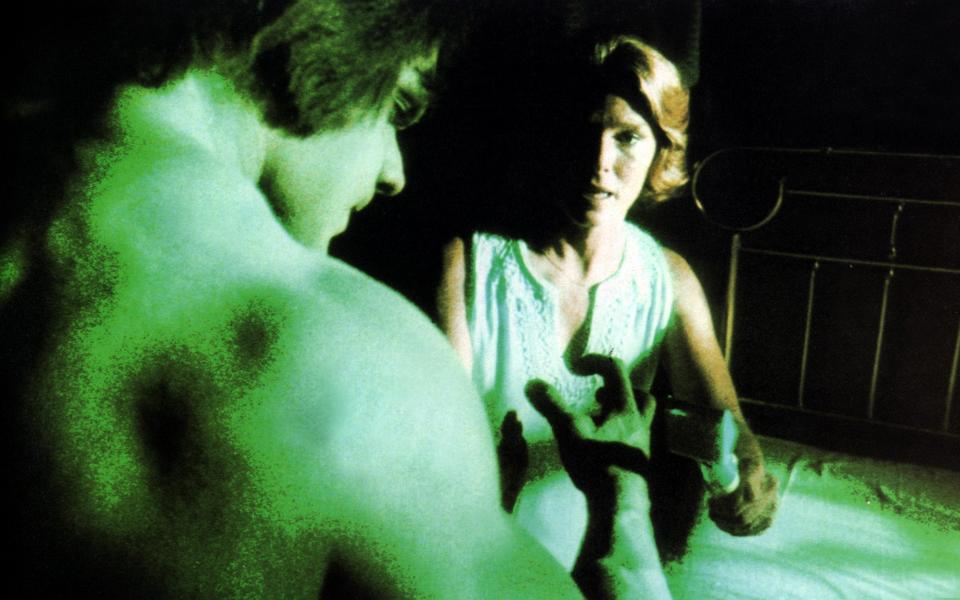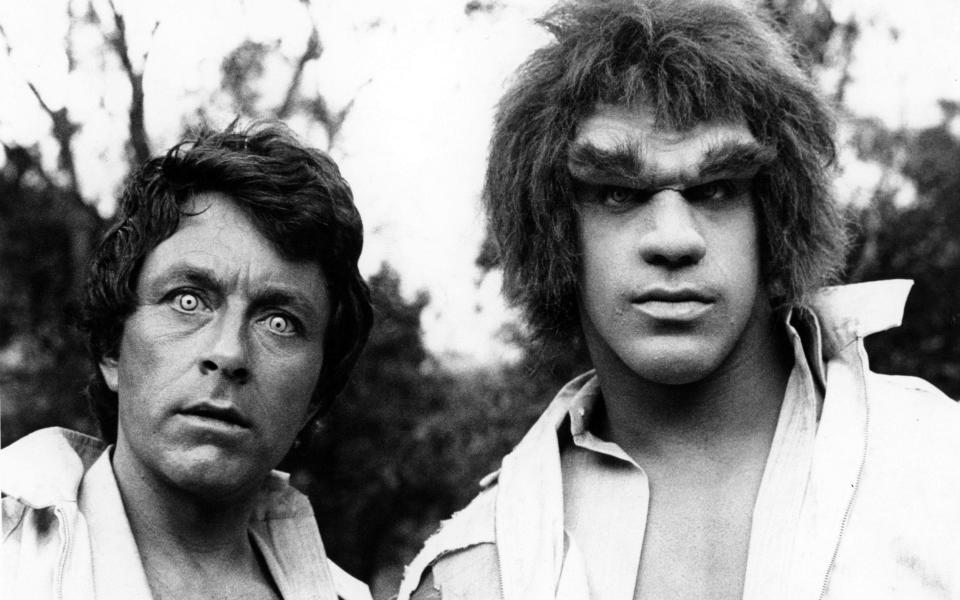‘I wanted to make him the colour of rage!’: creating the original Hulk

In 2003, writer-producer Kenneth Johnson attended the premiere of Hulk – the Ang Lee-directed, critical non-smash. “Everybody was groaning,” recalls Johnson. “After 10 minutes, my wife Susie said, ‘Is it me, or is this the worst movie I’ve ever seen?’”
Johnson certainly knows a thing or two about un-jolly green giants. He created and executive produced the 1978-1982 television series, The Incredible Hulk, which starred Bill Bixby as Dr Banner and bodybuilder Lou Ferrigno as his monstrous alter-ego, the Hulk.
Ang Lee’s film, starring Eric Bana, was the first attempt at a live-action (well, CGI) Hulk since – 25 years after Bixby uttered the immortal line: “Don’t make me angry, you wouldn’t like me when I’m angry.” But Ang Lee flourishes aside (“A genius,” says Johnson, “but miscast as a director”), the 2003 Hulk was a turgid, oddly primitive effort – part of that first wave of 21st Century superhero flicks, largely predicated on the allure of digital effects.
“At the end of the premiere, the lights came up and everyone was sneaking out of the back door, trying not to talk to anybody because it was just so bad,” laughs Johnson. “One of the Variety reporters snagged my arm and said, ‘Mr Johnson, don’t make me Ang Lee, you wouldn’t like me when I’m Ang Lee.” (That reporter wasn’t the only one to make the gag. Stand-up comedian and Hulk fanatic Stewart Lee did a well-known routine around the same pun.)
More than just a Hulk-based jape, it was acknowledgment that the TV series’ iconic line – written by Kenneth Johnson for the 1977 feature-length pilot (“I wrote the line as a joke!”) – was still the cultural touchstone when it came to the Incredible Hulk: a snappy, says-it-all calling card that transcended the series to become a defining throughline in Hulk lore. Indeed, Ang Lee’s film saved the line for its very last scene – “They had about 10 writers over five years writing that script,” says Johnson. “And it was the only line that got a rise!” – while subsequent movie Hulks put their own spin on it.
Clearly, TV’s Incredible Hulk still reigned supreme. Joyously dated in all its Seventies and Eighties references, and green body paint – plus, the source of many old gags about the Hulk’s endless stock of ripped trousers – the show popularised the Hulk in the mainstream and forged a Banner-Hulk dynamic that other screen versions clumsily fumbled in their giant green fingers: for all his smashing, the TV Hulk was a supporting player; the real battle was inside Dr Banner.
Forty-five years on, Marvel has established a movie formula so formidable that it’s able to shake up the cinematic universe with more offbeat concepts on Disney Plus. The latest is She-Hulk: Attorney at Law, which marks Hulk’s return to the small screen (the Mark Ruffalo version), playing support to his cousin, Jennifer Walters/She-Hulk (Tatiana Maslany), a character created back in 1980 – a direct result of the original TV show’s mega-success.
It seems strange now, in the Marvel-dominated present day, but the Bill Bixby/Lou Ferrigno Hulk didn’t only reign as the definitive screen Hulk – smashing aside all subsequent Hulks, at least until Mark Ruffalo took the role in 2012 and proclaimed “I’m always angry” – but for more than 20 years, TV’s Incredible Hulk was the only Marvel screen icon.
It began with Frank Price, then head of Universal television, summoning Kenneth Johnson to his office. Johnson had produced the Six Million Dollar Man and created its sister show, The Bionic Woman. “For a while, I had the number one show and number three show in the country simultaneously,” says Johnson. “I was flavour of the month!” As far as the executives were concerned, sci-fi adventure was Johnson’s bionic bread-and-butter.
Universal, explained Price, had picked up the rights to five Marvel superheroes. “This was before that meant anything,” says Johnson. “I think he got all five titles for about 10 grand. Crazy!”

Characters up for grabs were Captain America, Dr Strange, Ms. Marvel, the Human Torch, and – of course – the Hulk. “Which one would you like to do?” Price asked Johnson. To which he replied: “Gee, thanks Frank, but none of them. Spandex and primary colours – it’s just not me.’” Johnson laughs about it now: “I couldn’t imagine sitting down and having lunch with Captain America. I really didn’t want to get involved.” (Captain America, Spider-Man, and Doctor Strange all got TV movies around the same time – all broadcast on CBS.)
Johnson’s inspiration came from an unlikely source: a copy of Victor Hugo’s Les Misérables – handed to Johnson by his wife, Susie – and, more specifically, the honourable ex-convict Jean Valjean, pursued relentlessly throughout the novel by the police inspector, Javert.
He told Price: “I can take a bit of Victor Hugo, a bit of Robert Louis Stevenson’s Dr Jekyll and Mr Hyde, and this ludicrous thing called the Incredible Hulk. But it won’t be a comic book show, it will be a psychological drama for adults that’s based on classic Greek drama. It’s the idea of hubris and super confidence – that you know more than the Gods. That’s always dangerous. The hero brings a curse upon himself and he’s got to live with that.”
In the comic book’s origin story, Bruce Banner is a physicist who gets caught in the blast zone of a gamma bomb – far too comic-booky for Johnson’s more grounded take.
In Johnson’s version, Banner is a physician and widower – tortured by the fact he couldn’t save his wife from a car wreck. He researches the phenomenon of people who summon immense strength at times of stress, and, in an effort to harness that strength, exposes himself to an overdose of gamma, which causes him to transform into the Hulk – or “Hulk out”, to use the comic book parlance – whenever he’s angry or in danger.

Faking his own death, Banner is doomed to wander the Earth alone, searching for a cure. He roams from town to town, befriending the innocent or victimised, and trouncing local villains. Meanwhile, he's hounded by a tabloid reporter (Jack Colvin) who's on the trail of the Hulk. At the end of each episode, Banner wanders off once again – a solitary, tragic figure – always to the haunting tinkle of Joe Harnell’s Lonely Man Theme (for people of a certain age, surely the saddest piece of music ever composed).
The tragedy, says comic artist and writer Jim Rugg, was always part of the comics. Rugg spent two years reading and researching Hulk for his book, Hulk: Grand Design, which retells decades’ worth of Hulk history. “Hulk shows up and messes up whatever Banner’s doing – even crashes his wedding day,” says Rugg. “It’s a terrible affliction to live with. Sometimes Banner would try to die by suicide just to escape.” But it was the TV version that channelled Banner’s tragedy into a concise, polished formula – playing off the formats of TV hits such as The Six Million Dollar Man and The Fugitive – a more focused interpretation. Early comic production, says Rugg, was more ramshackle. “It was decades before the comics had that writers’ room mentality of ‘What’s the essence of this story?’” says Rugg.
The Incredible Hulk debuted with a pilot TV movie on November 4 1977. A second pilot movie aired later that same month, and the series began proper in March 1978. It was – in true Hulk-style – a ratings smash, and most popular with female audiences.
Johnson knew it would be a hit when he first saw Bill Bixby wearing his white contact lenses – a defining visual that signalled Banner’s loss of control and impending metamorphoses. It’s what Johnson called “the point of no return”. When the eyes burned white, Hulk’s arrival was imminent. The metamorphoses itself was pleasingly simple: Lou Ferrigno wore a tight shirt – which the costumer had weakened at the seams – then flexed his painted-green muscles to burst out.
There were some changes from the comic. Bruce Banner became David Banner, largely to eschew the comic book trend of alliterated names. Marvel maestro and Hulk co-creator Stan Lee called his heroes names such as Peter Parker, Reed Richards, and Stephen Strange to help remember them. Lee wasn’t keen on the name change, so Johnson compromised: he chiselled the TV Banner’s full name – David Bruce Banner – onto the character's bogus headstone, which was seen in the opening titles of each episode.

The history of the Hulk might have been significantly different if Johnson had gotten his way entirely. He wanted to make the Hulk red. “When I first talked to Stan Lee, I said, ‘Why is he green?! What is he, the Envious Hulk?’” says Johnson. “It doesn’t make sense… I wanted to make him the colour of rage!” Both Stan Lee and the studio ruled it out (though a Red Hulk was introduced into the comics in 2008).
Ahead of the show, Marvel publications featured promos and editorials – some were almost apologetic or backhanded. “Before the show even aired, they were saying things like, ‘We didn’t have creative control’, kind of backing off and explaining some of the differences,” says Jim Rugg. “I don’t know if fans were writing in and saying, ‘Why is he David Banner and not Bruce Banner?!’ It was very strange in tone. It wasn’t as promotional as much as apologising. I don’t know if Marvel was unhappy.”
Stan Lee, however, was a firm fan and a long-time friend of Kenneth Johnson. Lee never interfered, aside from suggesting that one fight between the Hulk and a bear should be upgraded. “It’s great, I love it,” Stan told Johnson after reading the script. “But it ought to be a robot bear!” The bear, mercifully, remained un-roboticized.
Kenneth Johnson wanted Bill Bixby for the role of Banner from the start. Johnson was impressed by Bixby’s multi-faceted performance in the teleplay, Steambath, playing a man coming to terms with his own death. Bixby was a well-revered TV star; a handsome, charismatic actor with a sincere humility. “When Bill walked in, the whole room was consumed,” says Johnson. Bixby died in 1993, aged just 59, from prostate cancer. “I still miss Bix to this day,” says Johnson.
Back in 1977, the actor’s initial reaction was the same as Johnson’s. “I’m not even gonna read something called ‘The Hulk!’” Bixby told his agent. “And his agent said, ‘Yes, you are!’” laughs Johnson. “Bix read it and called me the next day, then came to my office. He said, ‘It’s going to be psychological! I’m going to suffer!’ Actors love to suffer.”
David Banner does indeed suffer. In the pilot film, Banner doesn’t lose just one love of his life, but two – his wife, then a fellow scientist (played by Susan Sullivan) whom he falls for after transforming for the first time. A sucker for tragedy, Banner later marries a terminally ill psychologist, played by Mariette Hartley, in the heart-wrenching two-parter, ‘Married’.
“You weren’t married very long, huh?” a little boy asks Banner, after his new bride perishes in the Hulk’s arms. “Oh, it never would have been long enough,” replies Banner. Mariette Hartley won an Emmy for her performance as Banner’s dying bride.

As for ol’ greenskin himself, the 7’2” Richard Kiel was originally cast. But Kiel – best known as James Bond’s metal-toothed adversary, Jaws – was soon let go. He had the height but not the physique. Kiel didn’t mind too much. The contact lenses were restricting his already-limited vision, and the green body paint stained the crisp white interior of his new Chevrolet Caprice convertible. It was Arnold Schwarzenegger – also in the running for the Hulk but too short – who suggested Lou Ferrigno. The 6’5” bodybuilding champ had featured in Arnie’s Pumping Iron documentary. “Lou had the physique presented in the comic book,” says Johnson. “But he was not an actor at all. He was an out-of-work, 24-year-old sheet metal worker – who was deaf on top of that!”
Ferrigno lost 80 per cent of his hearing as an infant and had a speech impediment. An introverted child, he was dubbed “deaf Louis” by other kids and found escapism in comic book superheroes – including the Hulk. For Ferrigno, being painted green to play the Hulk was a dream-come-true job. “It was very uncomfortable,” he recently said about the three-and-a-half-hour paint job. “But when I glanced in the mirror, I thought I looked beautiful.”
Johnson insisted that, unlike the comic book version, his Hulk wouldn’t talk. (“‘Hulk smash!’ Yes, we see Hulk smash. ‘Hulk angry!’ Yeah, no s–t.”) The Hulk’s growls were supplied by 6’9” actor Ted Cassidy, best known as Lurch from The Addams Family. “He had this voice that came from the centre of the earth,” says Johnson. On the surface, Ferrigno’s job was mostly bursting through walls, throwing stuff around (including that poor bear), and jumping from various heights with women in his arms – classic Hulk shtick – but the masterstroke of Ferrigno’s Hulk is in the quieter moments.
Coming down from the rage, he finds a childlike mid-point between Hulk and human. After dispatching that week’s heavies, conmen, or loan sharks (a personal favourite: picking up a sleazy ‘70s lover-boy by his chest hair), Hulk is prone to helping children, nurturing baby birds in his giant hands, or – in one amusing moment – building sandcastles. “I love those moments,” says Johnson. “He’s tabula rasa – needy, softer, piteous.”

For Johnson, the show was less about Hulk-smashing than it was finding a thematic, emotional core. “The idea is the enemy from within,” says Johnson. “The enemy within Banner is anger. But it could be alcoholism, greed, obsession, jealousy…. The theme running through the Hulk is self-control. It's recognising and understanding the demon inside you and trying to control it.”
Banner meets a litany of guest stars on his travels, all battling their own inner demon. In one the most acclaimed episodes, ‘A Child in Need’, Banner meets a badly-bruised schoolboy – the victim of a drunken, abusive father. The Hulk terrifies the father into changing his ways.
There’s straight-up adventure, too, and some tinkering of Hulk lore – including a Season Four showdown with a bushy-eyebrowed evil Hulk.
Back in 1963, the original Hulk comic had been cancelled after just six issues, and the character was thrown into the Avengers with other not-yet-iconic superheroes. A second run of his own comic title was more successful, but it was the TV show that made the Hulk a mainstream icon. Jim Rugg remembers eating from a Hulk cereal bowl and viewing the character as a pop culture monster, alongside the likes of King Kong, rather than specific to comics. “The TV show is how most people knew the Hulk,” he says. “I’m sure that's what put Hulk in most people’s consciousness.”
Certainly, the TV series gave the comics a boost. Sales of The Incredible Hulk jumped up by more than 100,000 copies in 1979 and held strong during the early 1980s. The pilot movie was also released in cinemas overseas and became a theatrical hit in Europe. The Incredible Hulk was such a hit that Stan Lee created She-Hulk, in case Universal created a Bionic Woman-style spin-off first. “Some business people really felt we needed a female Hulk to protect our rights to the name… besides, Hulk was doing well and we’re greedy,” Lee told journalist Patrick Jankiewicz.
Marvel was right. Kenneth Johnson did have plans for a spin-off featuring Banner’s sister. When Harvey Shepard took over as president of CBS – “For about 20 minutes!” says Johnson – he effectively cancelled The Incredible Hulk mid-way through the fifth season. Johnson tried bargaining with a She-Hulk spinoff. “I will give you a woman that is dangerous, and that’s all the more painful because we love her,” he told Shepard. “Not a comic book, bra-popping She-Hulk bulls–t. I guarantee it will be a top 10 show.” But Shepard was unimpressed. The Incredible Hulk was cancelled in 1982.

Bill Bixby later produced and directed a handful of revival TV movies – ropey-but-amusing stories that introduced Thor and Daredevil, and eventually killed off the character. Nicholas Hammond, who played TV’s Spider-Man, recalled plans at one stage for a Hulk-Spider-Man crossover. Kenneth Johnson had never intended to bring in other superheroes – “Never!” he insists – and only learned about the revival films second-hand, while he was directing Short Circuit 2 on location. “As close as Bix and I were until his death, we never talked about them,” Johnson says about the later films. “Bix never brought it up and neither did I.”
Bill Bixby died before more films could be made. A She-Hulk pilot movie, starring Mitzy Kapture and set to feature both Bixby and Ferrigno, was also in the works.
One of the integral ideas of the TV show – that Hulk is a supporting player to Banner’s inner turmoil – isn’t necessarily true in the comics. “We weren’t reading to see some middle-aged man dealing with an existential crisis!” laughs Jim Rugg. “We were there to see a green monster fighting other monsters!” But it’s the dynamic that has so far worked best on-screen.
Mark Ruffalo's version is the only Banner/Hulk to come close. He’s also a supporting player to the rest of the Avengers – a smart move (he is “smart Hulk” now, after all, though Universal also held onto the character's distribution rights). But for cultural impact, the Bixby/Ferrigno incarnation is still the Hulk to beat. Bixby's lonely man endures because he embodied something intrinsic to the character. “Hulk is totally different to the other superheroes,” says Jim Rugg. “He’s not an antihero. He’s not a villain. But he’s not a superhero. He’s an awkward fit – he’s an outsider.”
She-Hulk: Attorney at Law is streaming on Disney Plus now

 Yahoo News
Yahoo News 